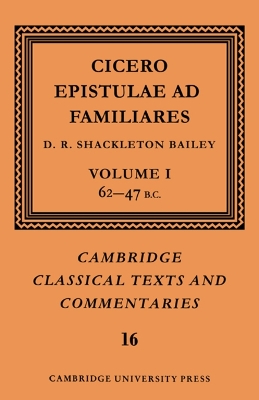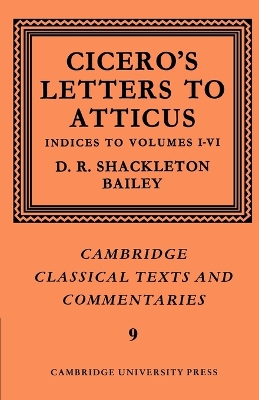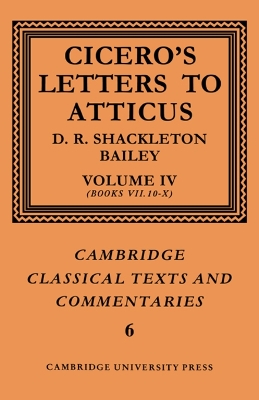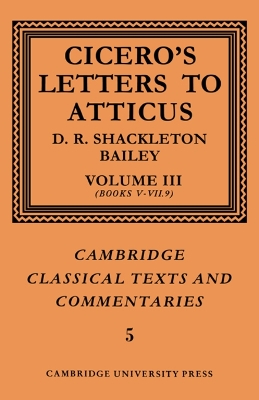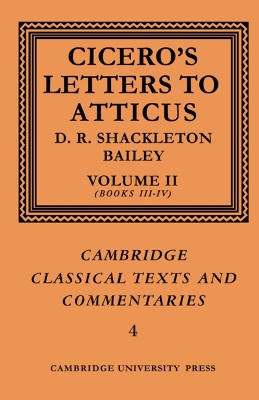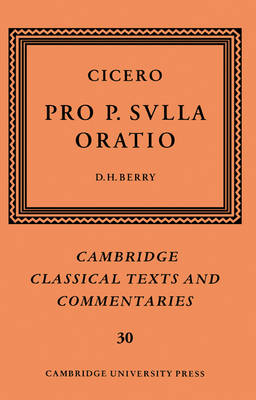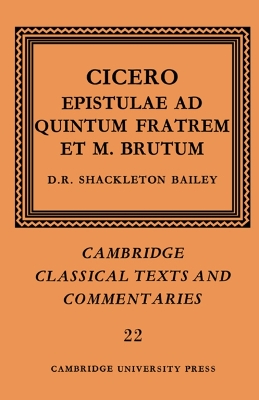Cambridge Classical Texts and Commentaries
12 total works
Cicero: Epistulae ad Familiares: Volume 1, 62-47 B.C.
by Marcus Tullius Cicero
Cicero: Letters to Atticus: Volume 5, Books 11-13
by Marcus Tullius Cicero and D. R. Shackleton Bailey
Cicero: Letters to Atticus: Volume 7, Indexes 1-6
by Marcus Tullius Cicero and D. R. Shackleton Bailey
Cicero: Letters to Atticus: Volume 4, Books 7.10-10
by Marcus Tullius Cicero and D. R. Shackleton Bailey
Cicero: Letters to Atticus: Volume 3, Books 5-7.9
by Marcus Tullius Cicero and D. R. Shackleton Bailey
Cicero: Letters to Atticus: Volume 6, Books 14-16
by Marcus Tullius Cicero and D. R. Shackleton Bailey
Cicero: Letters to Atticus: Volume 2, Books 3-4
by Marcus Tullius Cicero and D. R. Shackleton Bailey
Cicero: Letters to Atticus: Volume 1, Books 1-2
by Marcus Tullius Cicero and D. R. Shackleton Bailey
